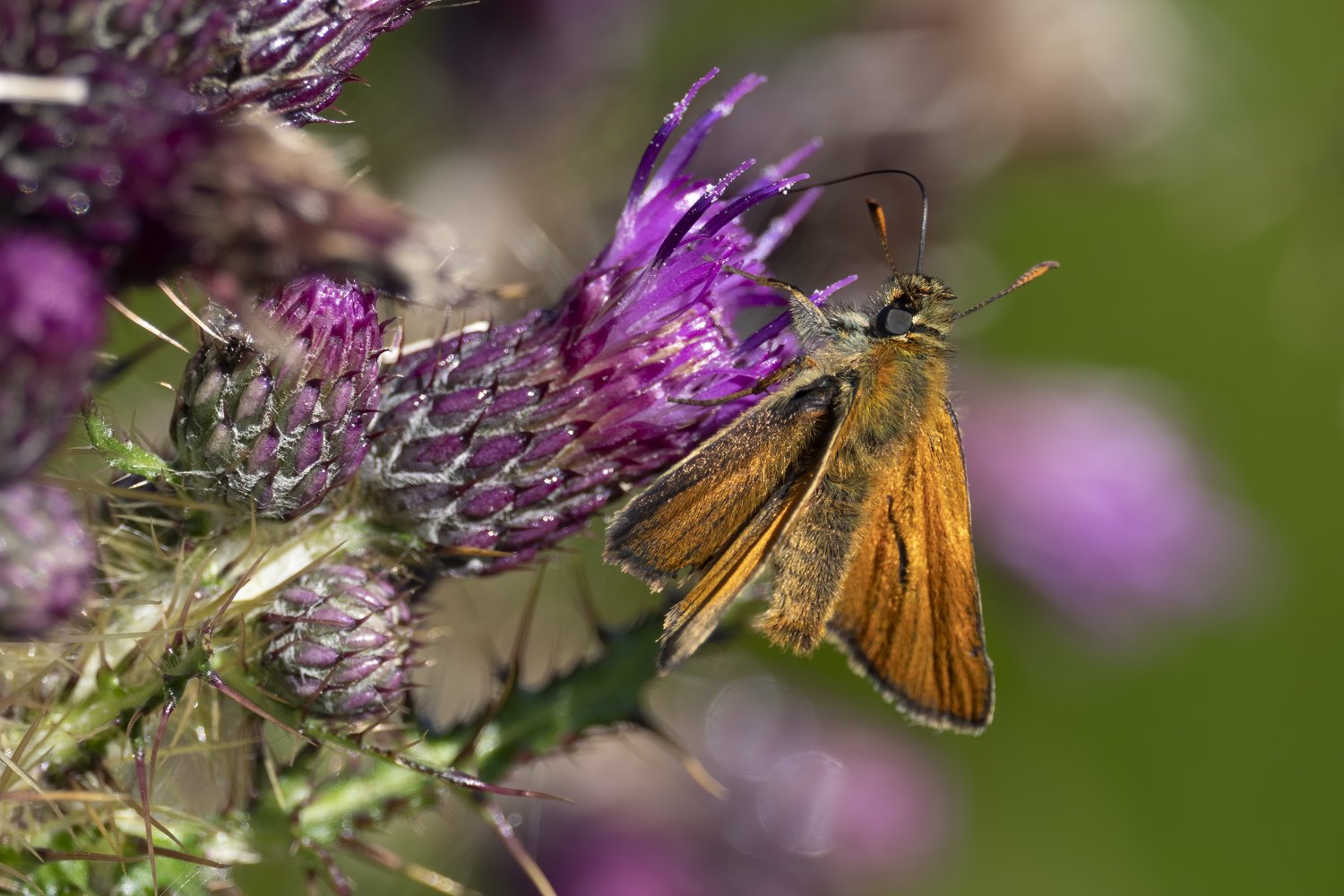Challenge Yourself by Going Small
Like a lot of photographers, I tend to fall into the trap of searching for that epic shot. I’ll trek for miles in the hope of finding a unique view, some rare wildlife, or that magical moment when the light just seems to come alive. All of that is fantastic, of course, and I wouldn’t trade it for anything, but sometimes it’s better to think small.
Playing peek-a-boo with a grasshopper. Grasshoppers can be tricky to track down. A cold day is easiest as it means they won’t be very active, but a warm day means they’ll be hopping all over the place when you’re trying to get the photo. Patience is the answer.
What do I mean by small? Think about your location. Look around and select a small area to investigate. Don’t hike for miles, just choose something small-scale and focus on that.
One of my favourite photography locations is the Preseli Hills in Pembrokeshire. It’s my local patch and I’ve hiked their trails, hillforts, and rock-strewn contours all of my life.
Northern view of the eastern end of the Preseli Hills. The hillfort of Foel Drygarn rises above the horizon on the left, with the rest of the hills sweeping away to the right.
But I also love to spend time there on a much smaller scale. I’ll choose a location and take a modest set of equipment with me, usually the 60mm F2.8 Macro lens and the 300mm F4 IS PRO telephoto along with my trusty OM-D E-M1 Mark II. Why this combination? Well, it covers pretty much everything if you’re aiming for wildlife photography. The macro lens is great if you can get up close and the 300mm allows you to grab images of anything that’s a little flightier. It can also give you the flexibility to get an image beyond the borders of your chosen spot. But, if you only want to carry a single lens, I suggest the 40-150 F2.8 PRO or 75‑300mm F4.8‑6.7 II.
Getting up close and personal to a grasshopper with the 60mm F2.8 Macro lens. The lens may seem tiny, but it produces epic results. There’s an almost clockwork look to a grasshopper, as if they were invented during Victorian times only to somehow escape the lab.
How to Choose a Location
This is the tricky part. The actual location can be anywhere you like; you just need to limit the size. Pick somewhere that interests you and then look for some kind of boundary. This can be something like only allowing yourself to move two metres away from a central spot, like a rock, tree, or clump of flowers. Or you can set an actual boundary. On my recent trip I chose boundaries based on the terrain: converging rivers formed two of the boundaries, while a narrow road cut across the final side to lock me in a small triangular area of boggy ground. It made it really easy to know when I’d reached the limit of my little world.
A ringlet butterfly (Aphantopus hyperantus) perched on the spiky tip of a gorse bush. Image captured using the 300mm F4 PRO lens with the MC-14 teleconverter.
Be Patient and Slow Down
Once your location is set it’s just a case of investigating it. Allow yourself to be open to possibilities. I went in search of grasshoppers and butterflies, but I discovered a beautiful frog completely by accident and got some stunning images. At other times of the year this same location would have had amazing flowers, such as bog asphodel or bright yellow flag irises, and I’ve seen plenty of dragonflies there as well.
A frog peers out from a tummock of thick grasses. Taken using the 300mm F4 PRO lens.
And then just be patient. Allow yourself to see what’s going on around you. Sit in one place for a while and drink in the beauty of your surroundings. You’ll grow attuned to your space and start to see things differently. You’ll start to understand animal behaviour, or the way light affects the landscape, flowers, and animals. Every spot is different, so give yourself time to understand it.
Spend time learning to understand the area you’ve chosen. Sit down and study wildlife behaviour, but also look at the way that light affects the landscape and flora.
But don’t forget to explore. Move from place to place, or even just turn to face a different direction. Different viewpoints and locations can produce very different results. A patch of hard rocky ground is a whole different world than a riverbank.
A stunning capture showing a large skipper (Ochlodes sylvanus) feeding on a thistle flower. I waited until the butterfly had moved into a position where the sunlight could fully illuminate its wonderful colours, and then used the 300mm lens and MC-14 teleconverter to get the shot. It was mid-afternoon on a warm day, so the butterflies were very active. Using a long lens meant I could get the image without disturbing the skipper.
But the main thing is to have fun. The enjoyment and peace that photographing nature can bring is the best thing about it. The images you produce are the memories.
Note: My blog post was originally published on the Olympus Image Space blog but, due to the sale of Olympus’ camera division, that blog site has closed so I’ve republished it here.






